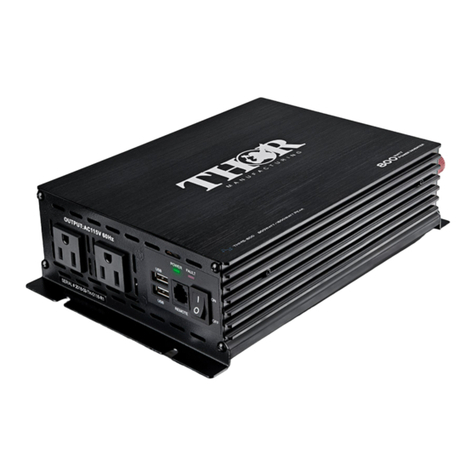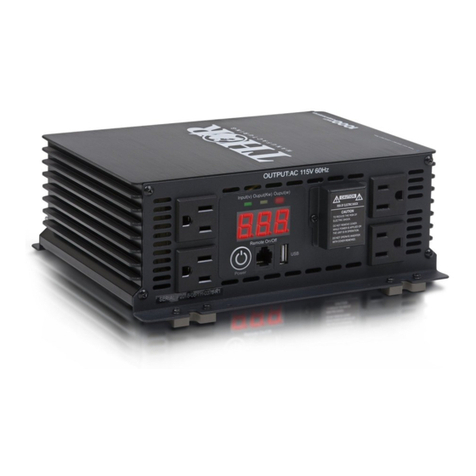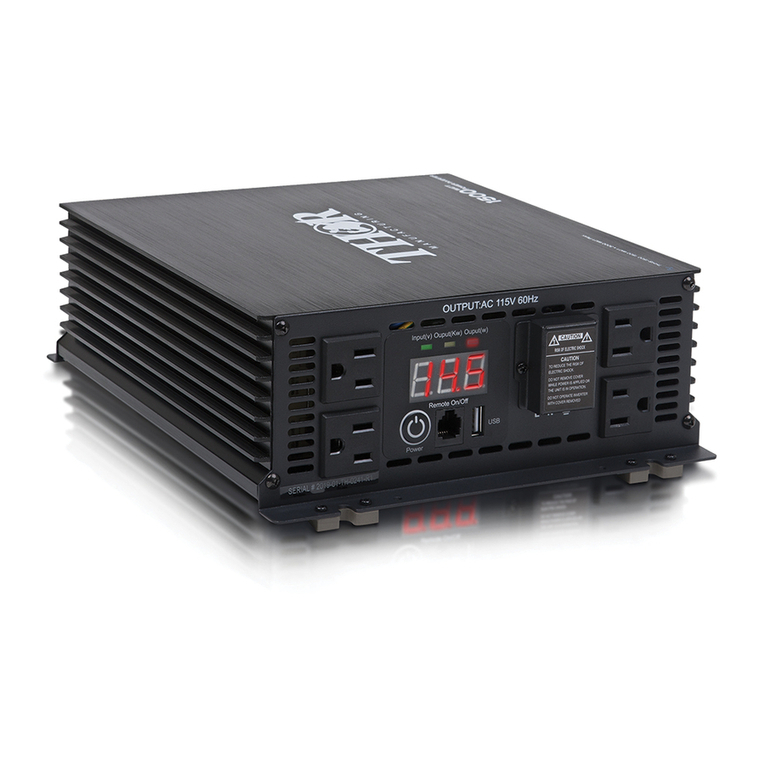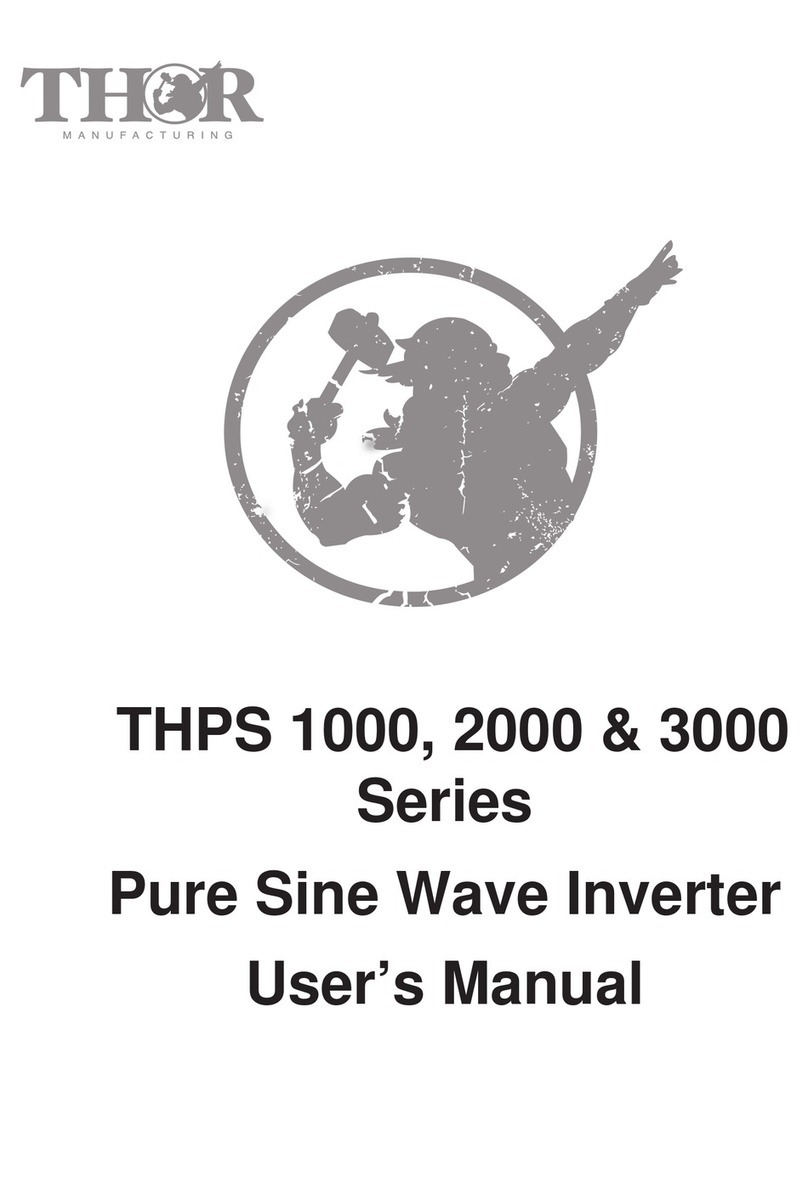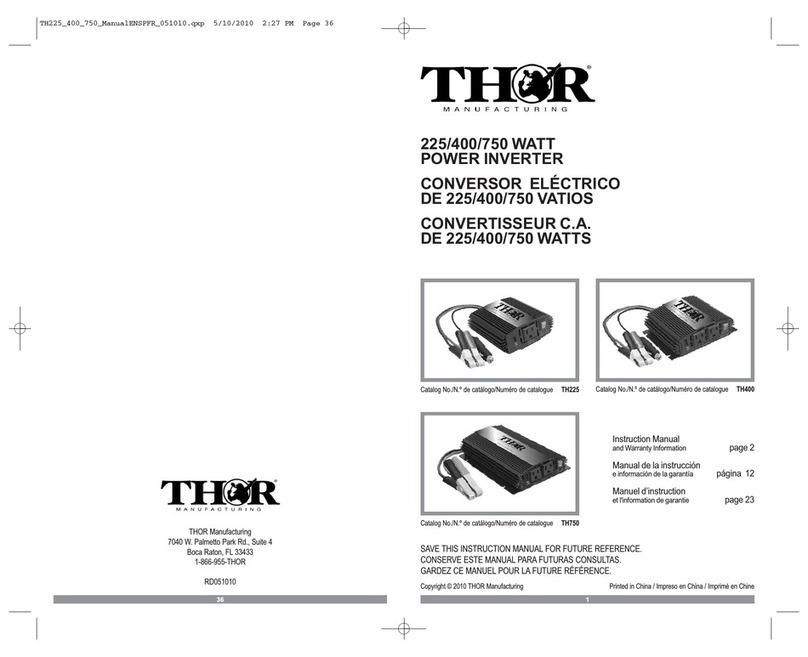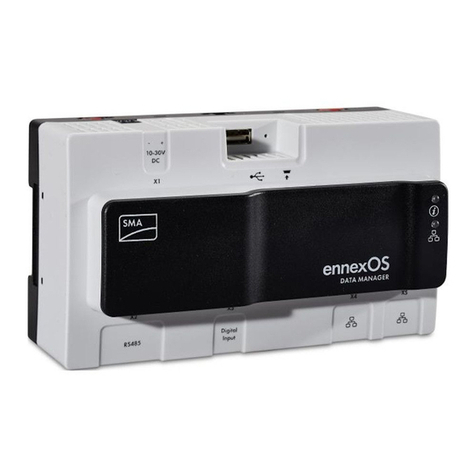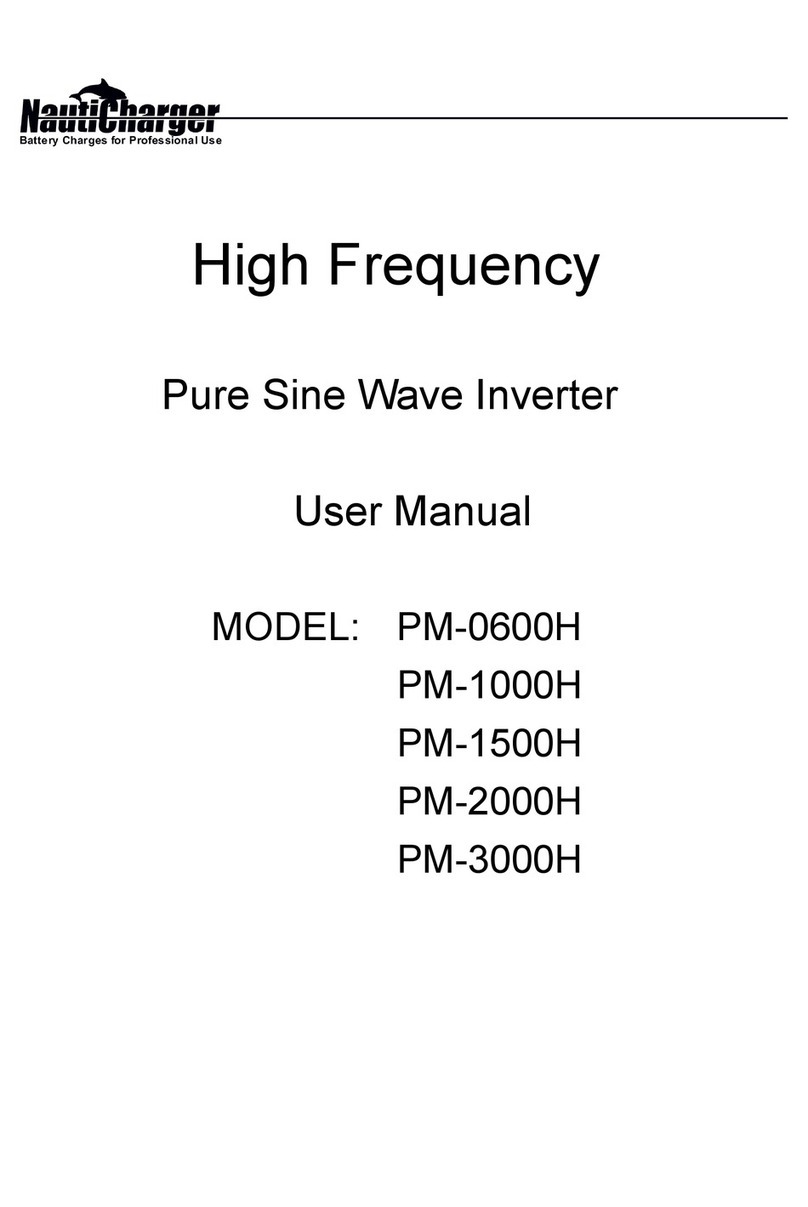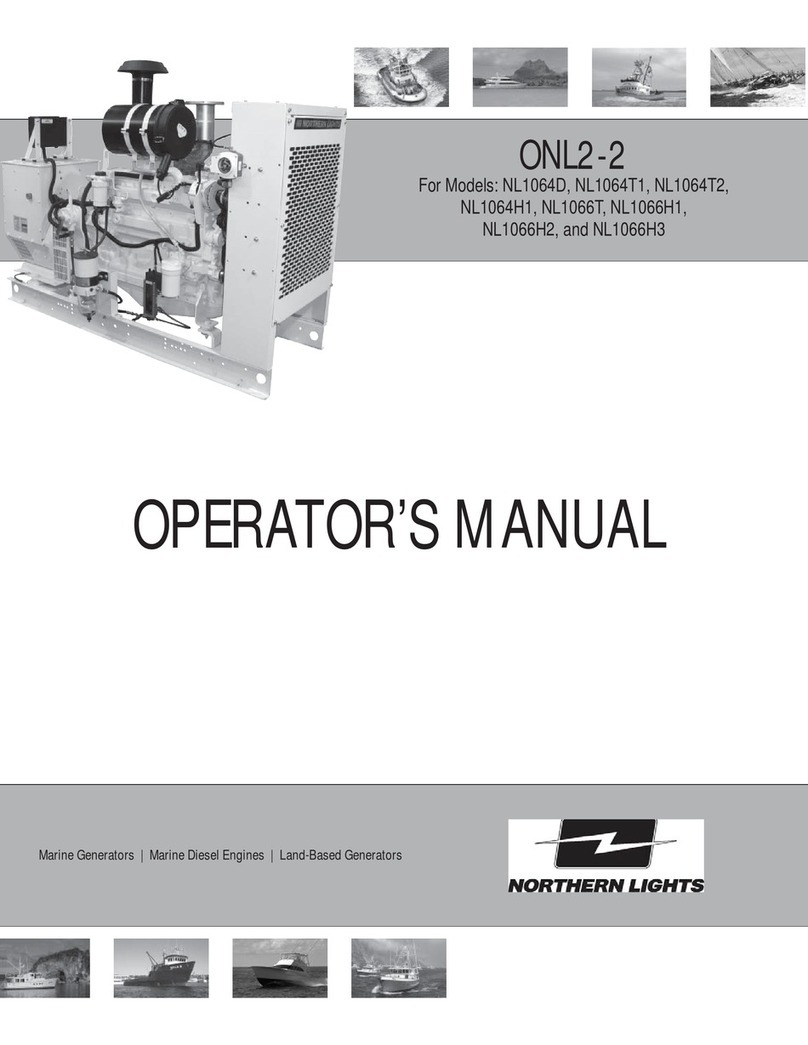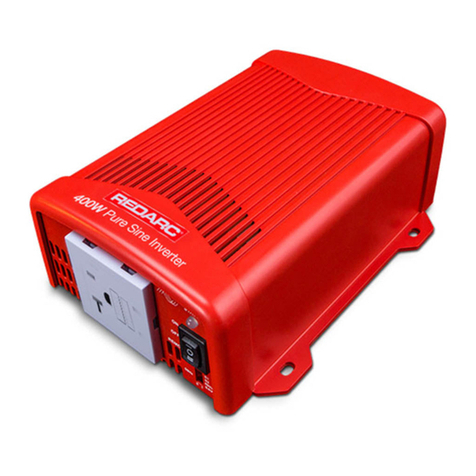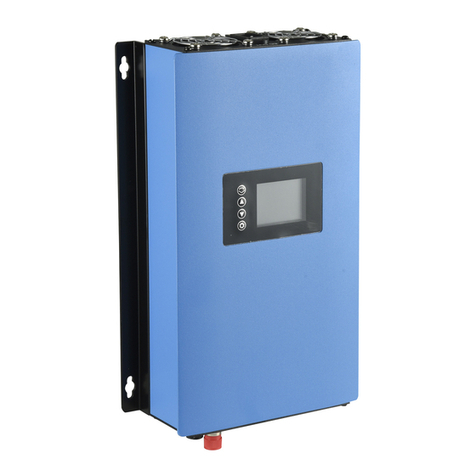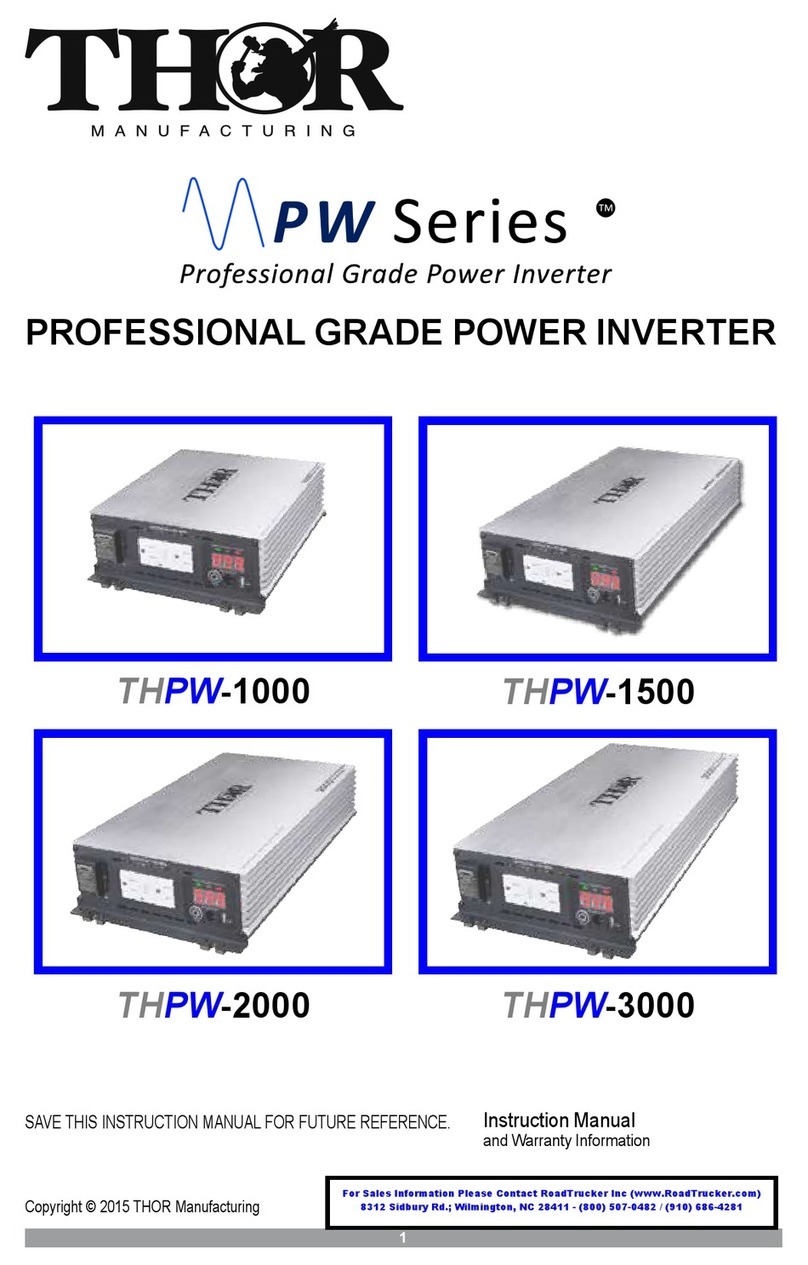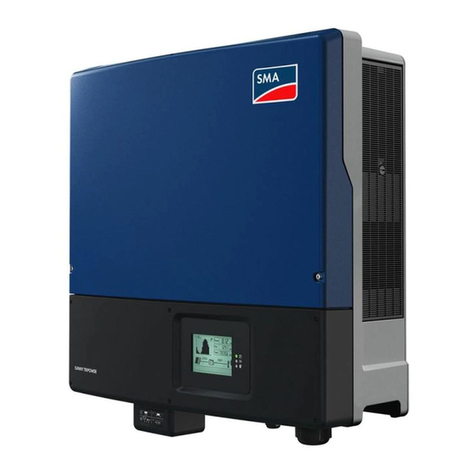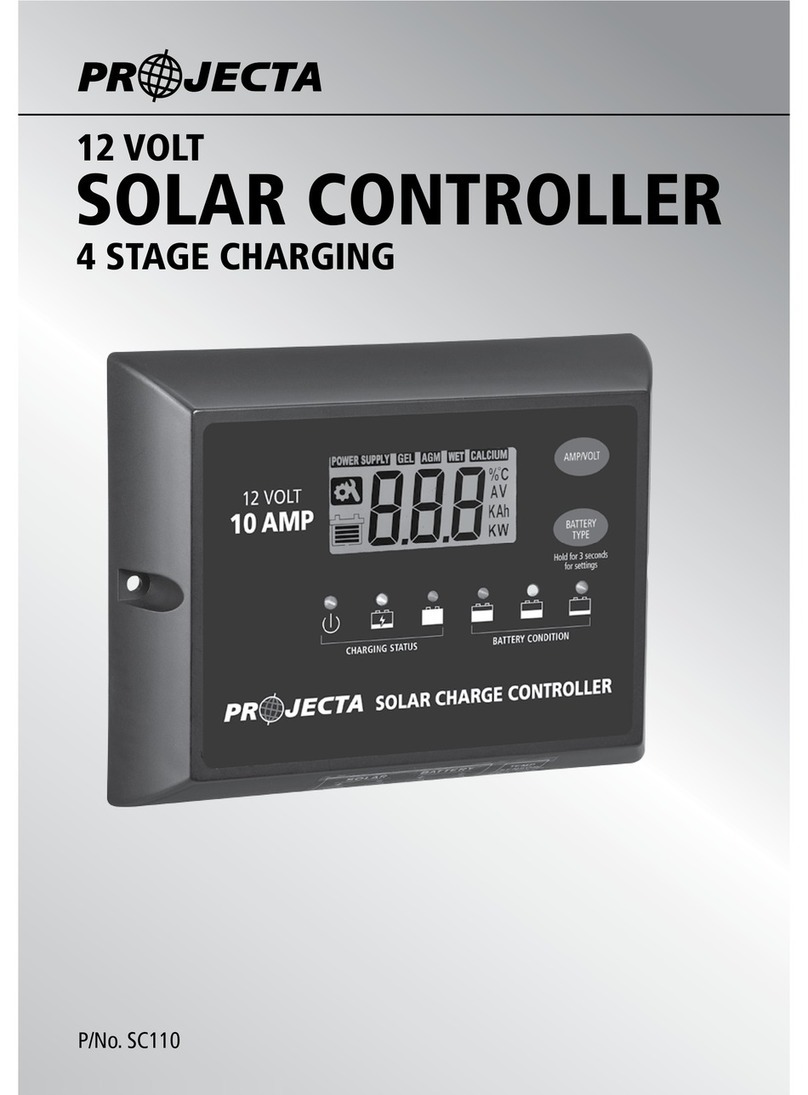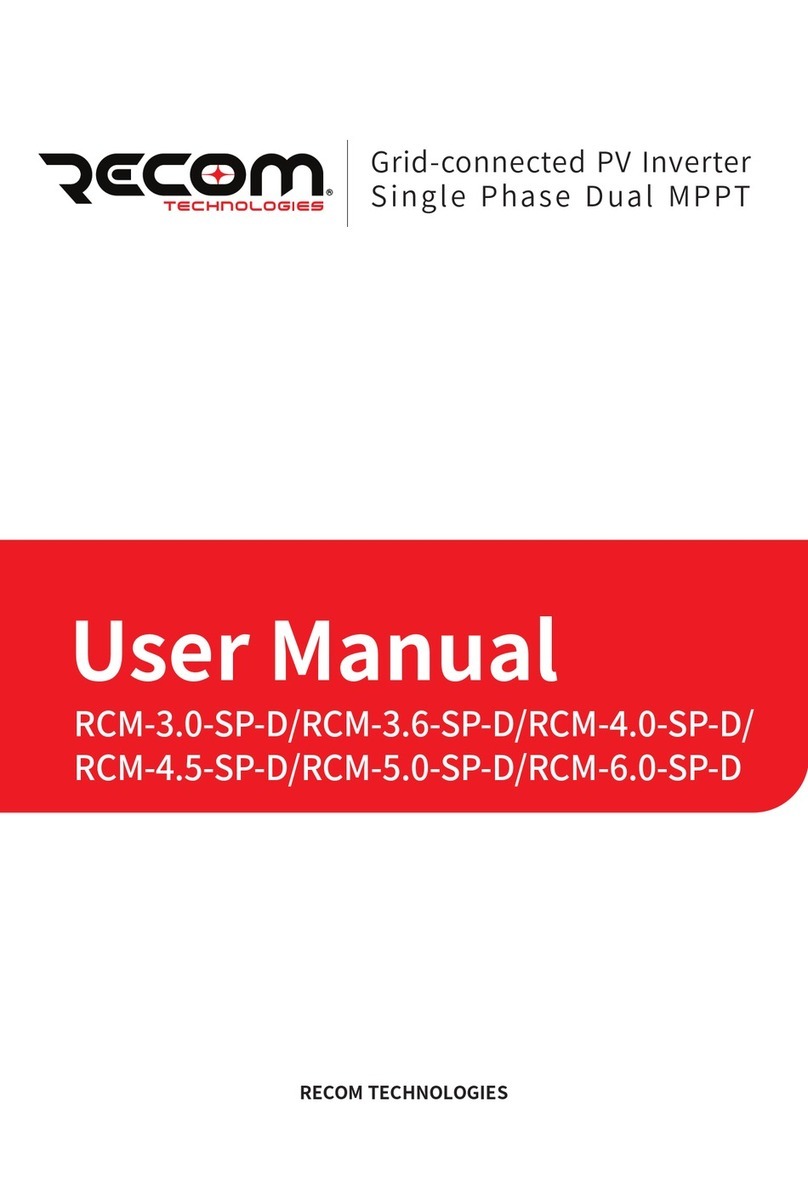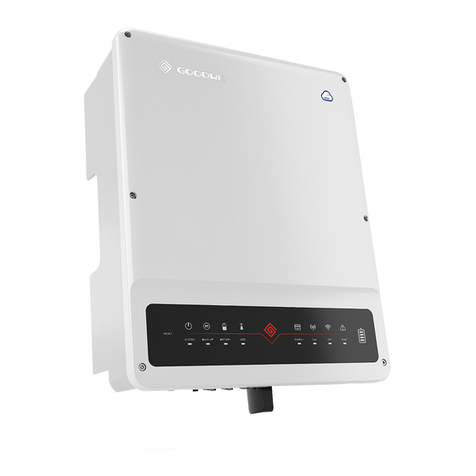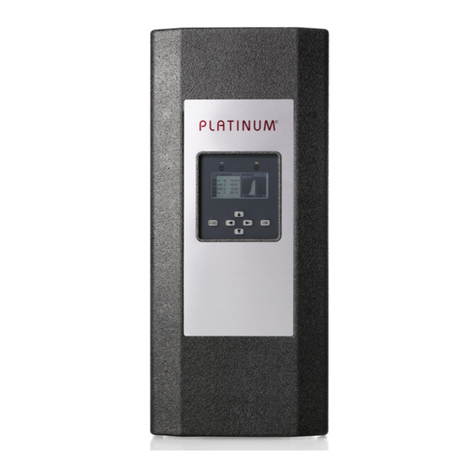
6
may not be able to start some of these motors even though their rated current draw is within specifications for this
power inverter.
If a motor refuses to start, observe the battery voltage using a DC voltmeter while trying to start the motor. If the
battery voltmeter drops below 11 volts while the inverter is attempting to start the motor, this may be why the motor
won’t start. Make sure the battery connections are tight and the power source battery (or batteries) is (are) fully-
charged. If the connections are good and the power source is charged, but the voltage still drops below 11 volts,
you may need to use a larger power source battery (or battery combination).
Your inverter has built-in overload protection so that if you do exceed the inverter’s output capacity continuously,
the unit will automatically shut down. Once the excess load is removed, the inverter can be restarted and resume
normal operation.
Note: To restart the inverter, turn it off, and then on again. The ON/OFF Switch is located on the inverter’s Front Panel (refer to
the “Control and Functions” section of this Instruction Manual).
The inverter powers resistive loads the easiest; however, larger resistive loads, such as electric stoves or heaters,
could draw more wattage than the inverter can deliver on a continuous basis.
CAUTIONS
Ensure that total continuous power consumption of all tools and appliances to be used simultaneously with your
inverter does not exceed the inverter’s continuous wattage rating. Also ensure that start-up wattage for inductive
loads does not exceed peak watts for more than a second.
Appliances such as microwave ovens will normally draw more than their rated current and could possibly overload
the inverter when operated simultaneously with other appliances. For example: A 600 watt microwave oven draws
approximately 940 watts.
Rechargeable Devices
CAUTIONS
• Some rechargeable devices are designed to be charged by plugging them directly into an AC receptacle. These
devices may damage the inverter or the charging circuit.
• When using a rechargeable device with your inverter, monitor its temperature for the initial ten minutes of use to
determine if it produces excessive heat. If excessive heat is produced, the device should not be used with your
inverter.
• This problem does not occur with most battery-operated appliances and tools. Most of these appliances use a
separate charger or transformer that is plugged into an AC receptacle.
• Your inverter is capable of running most chargers and transformers.
POWER SOURCE AND PROTECTIVE FEATURES
Power Source Requirements
Your inverter will operate from input voltages between 10-17 Volts DC. If the voltage drops below 10 volts, an
audible low battery warning alarm will sound. If the input voltage drops below 10 volts DC, the inverter will shut
down. This feature protects the battery from being completely discharged.
The inverter will also shut down if the input voltage exceeds 17 volts. This protects the inverter against excessive
input voltage. Although the inverter has built-in protection against over voltage, it may still be damaged if the input
voltage exceeds 17 volts.
Your inverter is engineered to be connected directly to standard electrical and electronic equipment in the manner
described in the “Installation” section of this Instruction Manual. Do not connect the inverter to household or RV AC
distribution wiring. Do not connect the inverter to any AC load circuit in which the neutral conductor is connected to
ground (earth) or to the negative of the DC (battery) power source.
The inverter will operate most AC loads within its power rating. Some induction motors used in refrigerators,
freezers, pumps and other motor-operated equipment, require very high surge currents to start them. The inverter
may not be able to start some of these motors even though their rated current draw is within specifications for this
power inverter. If a motor refuses to start, observe the battery voltage using a DC voltmeter while trying to start the
motor. If the battery voltmeter drops below 11 volts while the inverter is attempting to start the motor, this may be
why the motor won’t start. Make sure the battery connections are tight and the battery (or batteries) is (are) fully-
charged. If the connections are good and the battery is charged, but the voltage still drops below 11 volts, you may
need to use a larger battery (or battery combination).
Inductive loads, such as TVs and stereos, require more current to operate than resistive loads of the same wattage
rating. Induction motors, as well as some TVs, may require two to six times their rated wattage to start up. Because
these inverters have a peak watt power rating, many such appliances and tools may be safely operated. The
equipment that needs the highest starting wattage are pumps and compressors that start under load. This




















